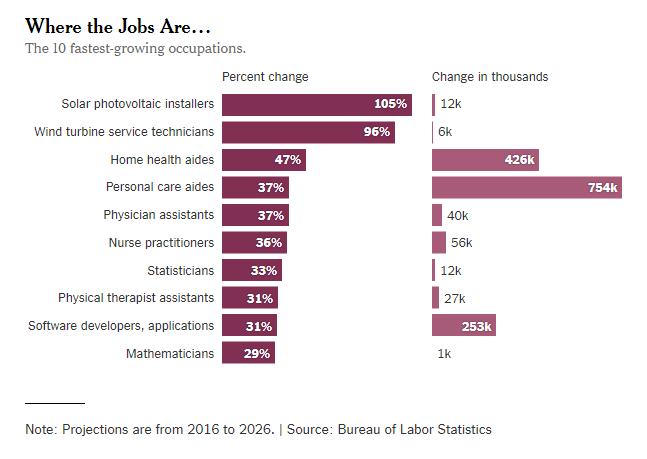(p. B3) Last time in this esteemed newsletter, my colleague Steve Lohr warned that automation would change the economy. But as he also explained, jobs are “more likely to be transformed by digital technology than destroyed by it.” This becomes clear as you look a little closer at the progress of robotics, including everything from the robotic arms that help build stuff in factories to the jaw-droppingly agile machines under development at a company called Boston Dynamics.
This past week, I wrote about Boston Dynamics, which runs a semi-secretive lab in Waltham, Mass., about 10 miles outside Boston. Built to move like animals and even humans, its machines are truly amazing (as YouTube watchers will attest).
At times, you can’t help but think of these mechanical creations as living things. The company will start selling one of them, a doglike robot called SpotMini, in the coming year. But even Boston Dynamics is not quite sure what these robots are actually good for.
Robots play tricks on the mind. We tend to think they are more advanced than they really are, perhaps because of science fiction movies or because our brains are wired to believe in bots. This is particularly true when it comes to the biomimetic machines inside a lab like Boston Dynamics.
“When we see a biped that looks like a person or a quadruped that looks like a dog, we project our previous experiences with people and dogs onto these machines. But, in fact, there is nothing inside,” said Gill Pratt, who worked with Boston Dynamics as an official at Darpa, a research arm of the Defense Department, and is now exploring new forms of robotics as the chief executive of the Toyota Research Institute. “It is like a hollow doll.”
For the full commentary, see:
(Note: the online version of the commentary has the date Sept. 28, 2018, and has the title “The Week in Tech; The Robots Aren’t as Human as They Seem.”)



